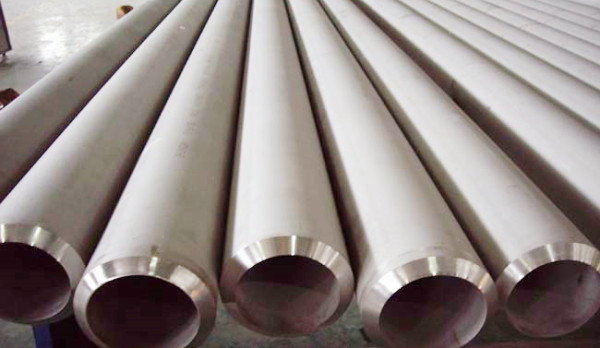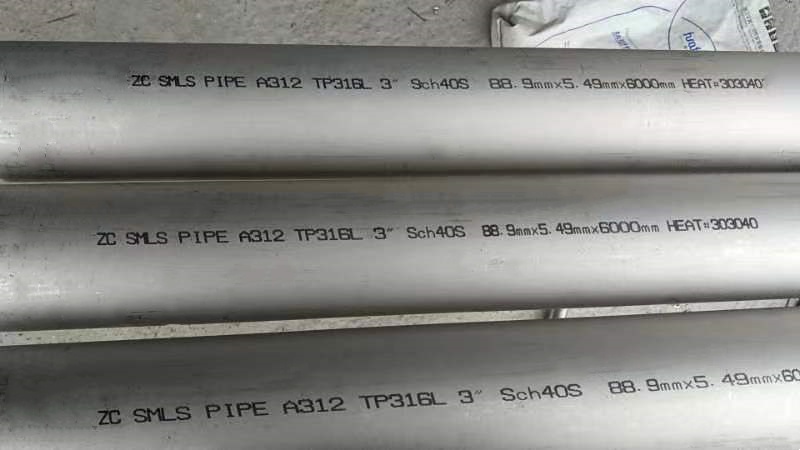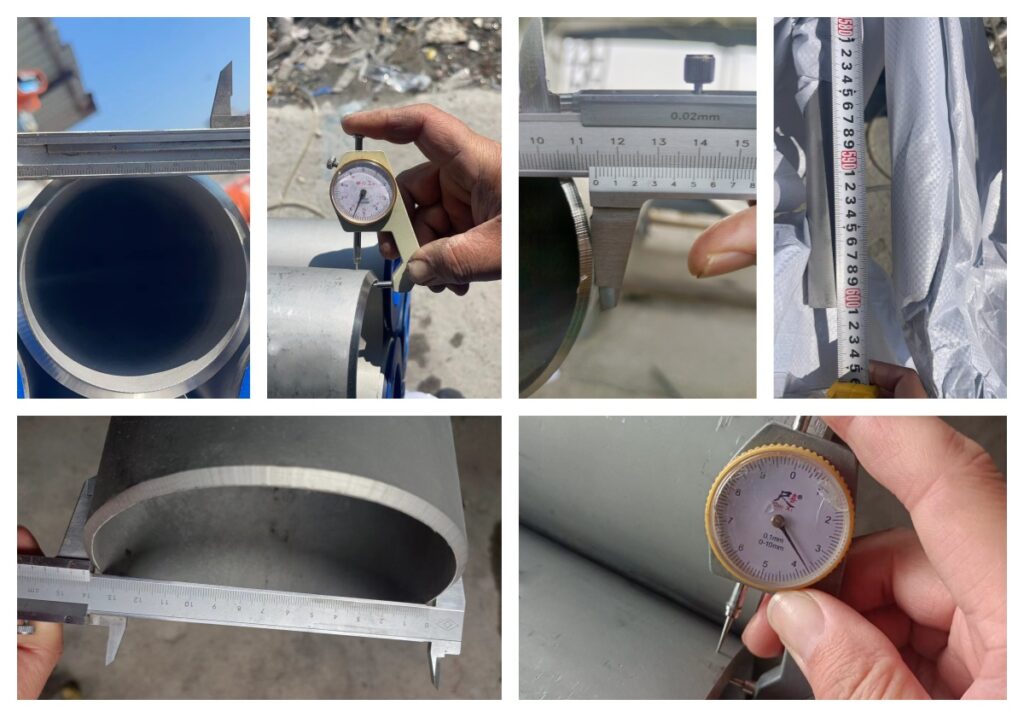
ASTM A312 is a material standard developed by the (ASTM) for seamless and welded austenitic stainless steel. ASTM A312 stainless steel pipe have the advantages of high temperature resistance and corrosion resistance.
ASTM A312 Stainless Steel Pipe Grade
ASTM A312 standard includes various types of stainless steel materials, including austenitic stainless steel, duplex stainless steel, and martensitic stainless steel. Common materials include ASTM A312 TP304/304L, TP316/316L, TP321, TP347, TP317L, etc.
Methods of Stainless Steel Pipe inspection
At present, the market is also filled with various types of stainless steel pipe products of varying quality. How to ensure the quality of stainless steel pipes through product inspection is a concern for many customers. Below, we will talk about methods of stainless steel pipe inspection.
Surface Inspection

Surface inspection of ASTM A312 stainless steel pipe is an important in ensuring product quality and meeting usage requirements. Before delivery, stainless steel pipes need to strict surface inspection to ensure that they are defect free, smooth, clean, and comply with relevant standards.Surface inspection of pipes includes:Visual inspection、roughness measurement、detection of detection、chemical cleanliness inspection.
Dimension Inspection of ASTM A312 Stainless Steel Pipe

ASTM A312 stainless steel pipe have extensive size range. Outer diameters ranging from 1/8 inch to 48 inches.The wall thickness includes SCH10S, SCH40S, SCH80S, etc. The production standards for ASTM A312 stainless steel pipes are in accordance with American standards ASME B36.10M and ASME B36.19M. There are several key points in size inspection:
Outer diameter inspection:
Use appropriate measuring tools (such as calipers, micrometers, or outer diameter measuring instruments) to check the outer diameter . The outer diameter of ASTM A312 stainless steel pipe must comply with the tolerance range specified.
Wall thickness inspection:
Wall thickness is one of the key dimensions of stainless steel pipes, as it affects the strength and pressure bearing capacity of the pipeline. Ultrasonic thickness gauges or other wall thickness measurement tools can be used to measure the wall thickness of pipelines. The wall thickness also needs to comply with the tolerance.
Diameter and wall thickness tolerance:
ASTM A312 stainless steel pipe standard specifies the tolerance range for the outer diameter and wall thickness . During the size inspection process, it is necessary to verify whether the actual size of the pipeline is within the allowable tolerance range. This helps to ensure compatibility between pipelines and other equipment or systems.
Pipe end inspection:
Pipe end condition and ovality need to be checked to ensure that the end is flat and free of defects.
Document recording:
During the dimension inspection process, detailed information such as measurement values, tolerance ranges, measurement dates, and measurement personnel should be recorded, and an inspection report should be formed. The inspection report is crucial for proving that the pipeline meets the standard requirements and can be used for subsequent quality control and traceability.
Material Test
The performance testing of stainless steel pipe materials is an important step in ensuring the quality of steel pipes. The following are some common methods for testing the properties of stainless steel pipe materials:
Chemical composition analysis: The content of alloy elements such as chromium (Cr), nickel (Ni), molybdenum (Mo), etc. in ASTM A312 stainless steel pipe is detected through chemical analysis to ensure that the material meets the standard requirements, especially for its significant impact on corrosion resistance.
Chemical Composition
| CHEMICAL | LIMITS | C | Mn | P | S | Si | Ni | Cr | Mo | N |
| ASTM A312 TP304L | MIN | 8.00 | 18.00 | \ | \ | |||||
| MAX | 0.035 | 2.00 | 0.045 | 0.030 | 1.00 | 13.00 | 20.00 | \ | \ | |
| ASTM A312 TP316L | MIN | 10.00 | 16.00 | 2.00 | \ | |||||
| MAX | 0.035 | 2.00 | 0.045 | 0.030 | 1.00 | 14.00 | 18.00 | 3.00 | \ | |
| ASTM A312 TP317L | MIN | 11.00 | 18.00 | 3.00 | \ | |||||
| MAX | 0.035 | 2.00 | 0.045 | 0.030 | 1.00 | 15.00 | 20.00 | 4.00 | \ | |
| ASTM A312 TP321 | MIN | 9.00 | 17.00 | \ | \ | |||||
| MAX | 0.080 | 2.00 | 0.045 | 0.030 | 1.00 | 12.00 | 19.00 | \ | 0.10 | |
| ASTM A312 TP347 | MIN | 9.00 | 17.00 | \ | \ | |||||
| MAX | 0.080 | 2.00 | 0.045 | 0.030 | 1.00 | 13.00 | 19.00 | \ | \ |
Tensile strength and yield strength testing: Use a tensile testing machine to stretch stainless steel pipes, measure their ultimate strength before fracture and the required force under specific deformation to evaluate their tensile strength and yield strength.
Elongation test: During the stretching process, measure the elongation of stainless steel pipes to evaluate their ability to undergo plastic deformation.
Mechanical Properties
| MATERIAL | T.S (MPA) | Y.S (MPA) | EL % |
| ASTM A312 TP304L | 485 min | 170 min | 35 min |
| ASTM A312 TP316L | 485 min | 170 min | 35 min |
| ASTM A312 TP317L | 515 min | 205 min | 35 min |
| ASTM A312 TP321 | 515 min | 205 min | 35 min |
| ASTM A312 TP347 | 515 min | 205 min | 35 min |
Pressure testing: Pressure testing to ensure that they do not leak or rupture within the expected pressure range. This can be done through methods such as water pressure test, air pressure test, or explosion test.
In addition, specific performance tests may also be required, such as fatigue testing, impact testing, thermal stability testing, etc. The factory inspection of stainless steel pipes is an important link to ensure their quality.
Zizi Engineering Co Ltd. has been engaged in the production and sales of stainless steel pipes for many years. Immediate response, excellent quality, quick delivery and customer satisfaction truly define us. We look forward to collaborating with more customers to achieve win-win outcomes.
